
There are all kinds of metal detecting sand scoops out there to choose from and depending on your needs, the type of scoop may vary. In some cases, people will make their own but that all depends too. In fact, I made my own as well which I will share here too but its not just the scoop you need but how you are scooping up your targets that will make you more efficient on the beach. Either way, having some kind of scoop is a must out there and without one, you will waste too much time while you hunt.
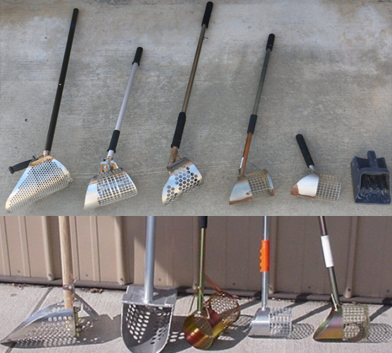
First things first, I would recommend getting a decent stainless steel scoop with a long handle. If you are digging in rocks and hard packed sand then this will help the most. If you are a dry sand hunter most of the time, then I would suggest an aluminum scoop with a cage/mess style basket that will sift through the dry sand easier.
Some folks like longer shafts with handles mounted to them but this will all depend on your preference and comfortability.
Over time you may change that but picking the right scoop can also depends on the application it is needed for. In one case for me, I hunt small lakes and spots that have hard flat bottoms to them. So as a result, I made a custom diamond head scoop with a flat bottom that has worked awesome in these locations.
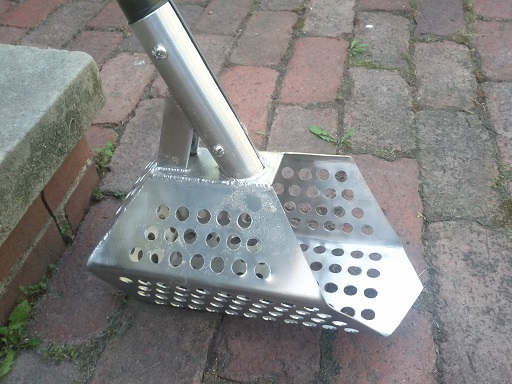
As you can see, this scoop was custom made. It has a flat bottom that allows me to scrap along the bottom of hard clay or bedrock and helps pick up objects better. So depending if I go to these locations then I will take this along with me.
In other cases though, I may be in a hard rocky area or I need something to cut through the hard packed sand. So in that case I will take a nice diamond head scoop with me. My trusty one is pretty heavy and others are lighter and made for the dry/wet sand but this is just all depending on where you hunt too.
Other folks will just make their own since some of these can get quite expensive and I have see folks use strictly plastic shovels or PVC so they can still swing their detector over the area to see if they got the target. Whatever your preference is, there are a few links out there that will talk about the different scoops types available to you so you can make a better decision for yourself. Again, your area, your style and the places you hunt exactly will dictate your needs and the type of scoop you feel you will need. So I would just say, do your research. There are plenty of links out there and depending on what want, you will spend up to 700 dollars for a Titanium scoop with a carbon fiber handle.
The next most important thing is how are you actually scooping? Are you doing it correctly? Is there a correct way? Well the answer to that is yes but some people have their own correct way. One person I hunt with actually pushes his scoop forward with his leg and not his foot which is odd to me but seems to work well for him so I don’t knock it. But the first thing to know is how your detector picking up that target in relation to your coil? Meaning, can you pinpoint the area of the target with coil so you know exactly where it is? Well if you know your machine well, then should have a very good idea where that target is when swinging that coil back and forth forth from different angles.
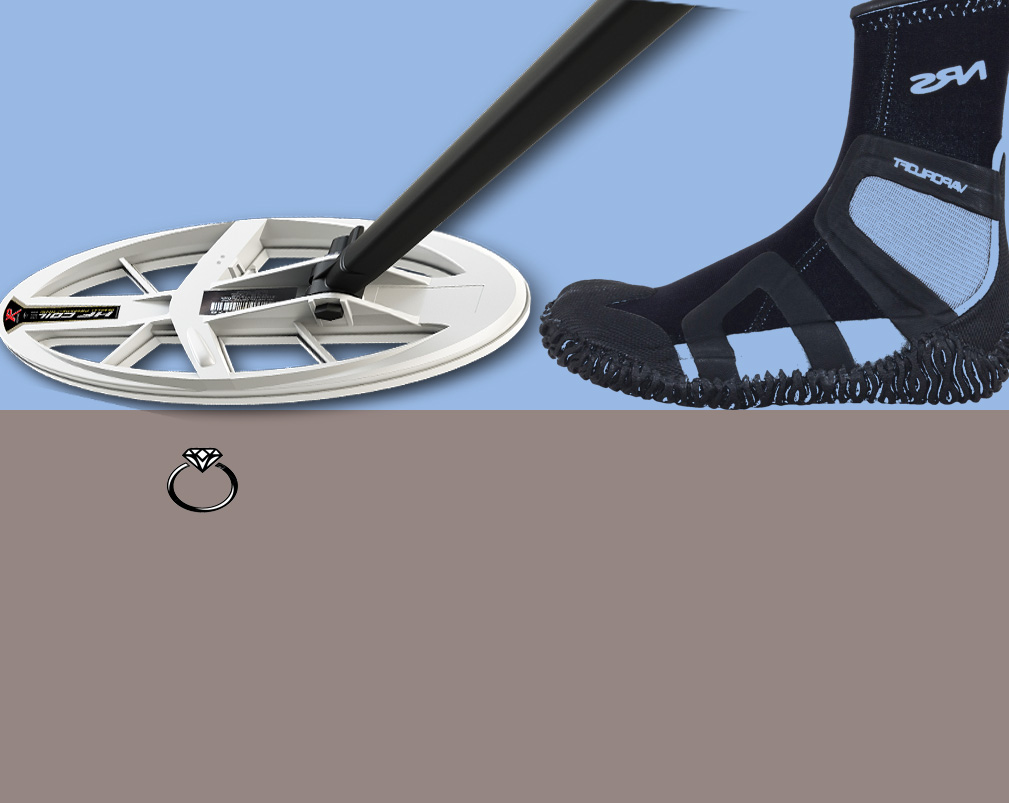
Once you have isolated where your target is, I generally put my one foot forward to where the scoop will go down which is right behind the coil. Typically you have to feel for the edge of the coil with your foot so you can plant your scoop in front of it and also mark your target location.
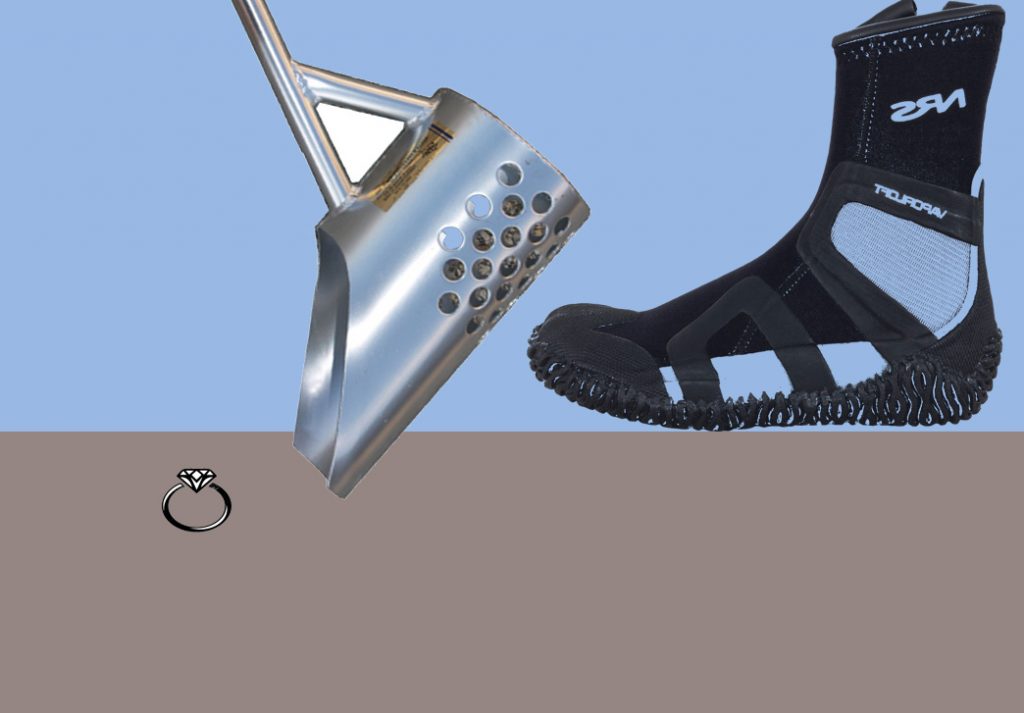
Now depending on your scoop handle and its angle, you have to pitch your scoop forward enough to get to the target. This is important to know and learn because as you hunt in the water, usually you cannot see the bottom that you are scooping. Therefore I recommend practicing the technique on land so that when you go for your target you get it the first time. This is not always the case but if you are in the surf you have to learn to be quick. Otherwise, you may loose that target and never recover it.
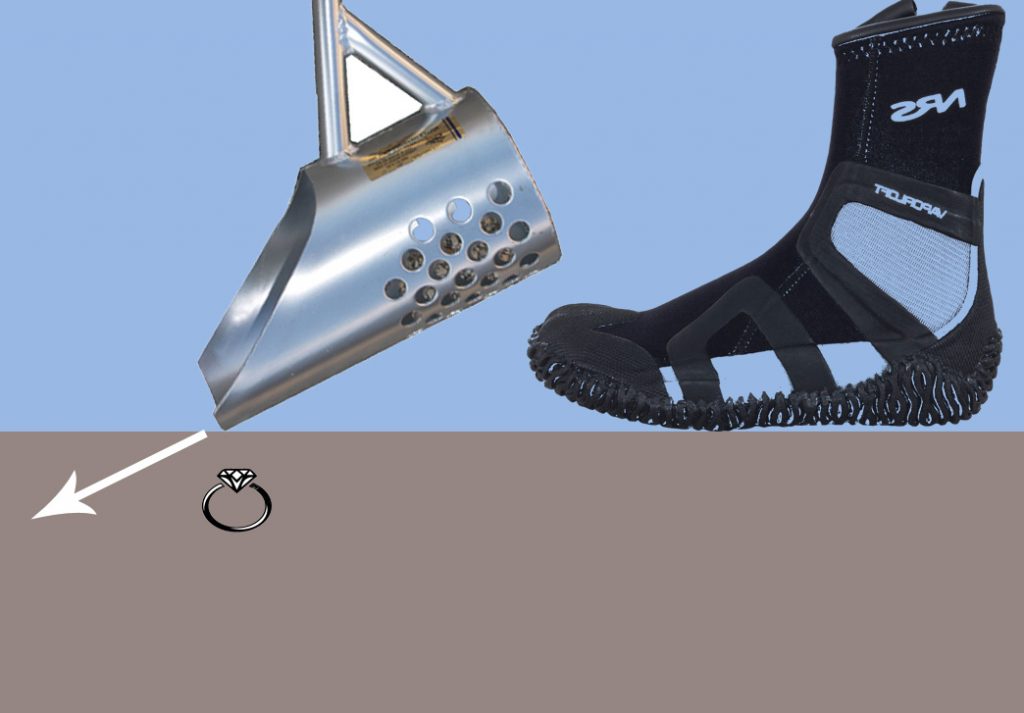
Again, the pitch or your scoop is important to learn because you can easily over shoot and miss the target. This is something that takes time to learn so I do recommend practicing on land so you can develop your own technique.
Another important tip that I have learned over time is when you shake your scoop. That’s right, even shaking your scoop can make a difference when recovering your target. So once your push your scoop into the sand, BEFORE lifting it completely our of the water…..start shaking the sand out a slowly just as you start to lift it up. Believe it or not but I have found that sometimes that target will fly out the top of the scoop when lifting it up and out of the water. So by shaking it a little with help “settle” that target in your scoop as you comes up.
Now if you have nothing in your scoop and no more tone in front of you which can happen sometimes, don’t give up! Sometimes you can move that target just out of range. This is why I always do what I call a nice big “Courtesy Scoop” and usually you will pull it back up. Other times it can be just a light piece of aluminum or something that floats out but its always important to double or triple check those holes.
There will be more to follow on this but this is my initial take on this topic that I just would like to share here so more to come later.